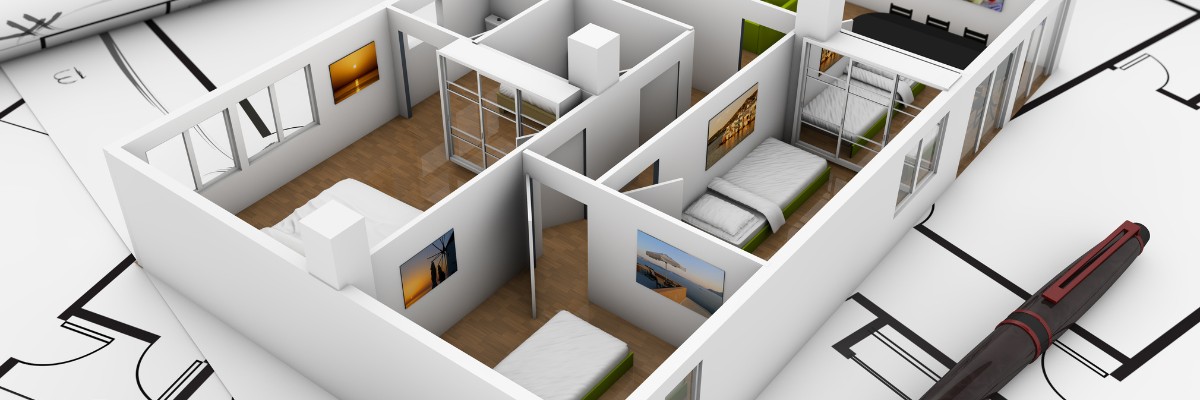
Your home should be your haven, a place where you feel comfortable and relaxed. A well-designed home can help you achieve just that. But if you are a beginner in the world of interior design, the task of decorating your home can be daunting. With so many options available, it’s hard to know where to begin. In this article, we will share some tips and tricks for interior design beginners to create a stylish and welcoming home.
Start with a Plan
Before you begin any home decor project, it’s essential to have a plan. Determine your style preferences and the purpose of each room. Consider the layout of your home, your lifestyle, and your budget. This will help you to create a cohesive look that meets your needs and reflects your personal style.
Create a Mood Board
A mood board is a collection of images, colors, and textures that help you visualize the look and feel of your space. It’s a great tool to use when designing a room or space. Collect images from magazines, Pinterest, or other sources that inspire you and represent your style. You can also include fabric swatches, paint samples, and other materials that you plan to use in your decor. This will help you to create a cohesive and well-designed space.
Choose a Color Scheme
One of the essential elements of interior design is color. The right color palette can set the mood and tone of a room. Choose a color scheme that reflects your style and personality. You can use neutral colors as a base and add pops of color for interest. If you’re not sure where to begin, start with a favorite piece of artwork or accessory and build your color scheme around it.
Invest in Key Pieces
When decorating your home, it’s important to invest in key pieces that will last for years to come. Choose high-quality furniture, lighting, and accessories that will withstand wear and tear. Consider purchasing classic and timeless pieces that will never go out of style. This will save you money in the long run and give your home a more polished and sophisticated look.
Mix and Match Textures
Textures can add depth and interest to a room. Mix and match textures, such as velvet, leather, and fur, to create a cozy and inviting space. You can also mix and match patterns, such as stripes, florals, and plaids, to add visual interest. Just be sure to balance the patterns and textures so that the room doesn’t feel too busy or overwhelming.
Layer Lighting
Lighting is an essential element of interior design. It can set the mood, highlight artwork, and create a cozy ambiance. When designing your space, be sure to layer your lighting. Use a combination of overhead lighting, task lighting, and accent lighting to create a well-lit and functional space. You can also use dimmer switches to control the brightness of the room.
Add Personal Touches
Your home should reflect your personality and style. Add personal touches, such as family photos, artwork, and accessories, to make your space feel more inviting and welcoming. Display items that have sentimental value or represent your interests and hobbies. This will make your home feel more personalized and unique.
Consider Scale and Proportion
When choosing furniture and accessories for your space, it’s important to consider scale and proportion. A large piece of furniture in a small room can make the space feel cramped and uncomfortable. On the other hand, a small piece of furniture in a large room can make the space feel empty and uninviting. Be sure to choose pieces that are the right size for your space and balance the proportions of the room.
Keep it Simple
Less is often more when it comes to interior design Keeping things simple and uncluttered can create a more calming and relaxing space. Avoid overdecorating and choose a few key pieces that make a statement. This will allow the eye to rest and appreciate the beauty of the space without being overwhelmed.
Don’t Forget Functionality
While it’s essential to create a visually pleasing space, it’s equally important to consider functionality. Ensure that your space is designed to meet your needs and lifestyle. Consider the traffic flow of the room, the placement of furniture, and the storage options available. A functional space will make your life easier and more comfortable.
Interior design can seem overwhelming for beginners, but by following these tips and tricks, you can create a stylish and welcoming home. Start with a plan, create a mood board, choose a color scheme, invest in key pieces, mix and match textures, layer lighting, add personal touches, consider scale and proportion, keep it simple, and don’t forget functionality. With a little bit of creativity, you can turn your house into a home that reflects your personal style and meets your needs. Remember, interior design is not about perfection, it’s about creating a space that makes you happy and comfortable. Happy decorating!


